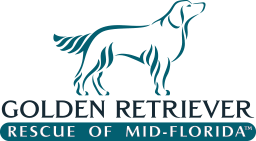How to Use It Correctly for Training
Head harnesses are one of those pieces of training equipment that can be controversial. We don’t particularly like them, but have used one on a 90 pound rescue lab who loved the pool and would pull his owner and trainer (Yes, both of them working together to hold him) over to the stairs to get in. GRRMF will not use a prong, shock or choke collar, so the gentle leader was the one thing we could use to stay safe when working with this big guy. When used, it is supposed to be a temporary measure as you teach loose leash walking using more appropriate equipment like an adjustable harness attached to a leash. We would much prefer to take the time to teach people how to loose leash walk with a harness, however know some people won’t take the time to learn. There are pros and cons to the head harness as outlined by Dr. Sophia Yin, an animal behaviorist and veterinarian which addresses the techniques and some concerns. Although her insight is from 2012, it still holds true today.
Are Head Collars on Dogs Dangerous or Safe by Dr. Sophia Yin which Dr. Patricia McConnell also refers to for her readers.
We also like this video which briefly describes how to acclimate the dog to the head harness. Notice it also advises its use as temporary: How To Use A Gentle Leader Head Collar – Professional Dog Training Tips
Please consult a force free trainer who can help you learn the loose leash walking techniques to maximize the joy for you and your pup when going out for that bonding walk time together.
GRRMF extends special thanks to our force free trainers Jan Casey, Susan Kendrick and Katie Obringer for providing this informative information for our readers.
